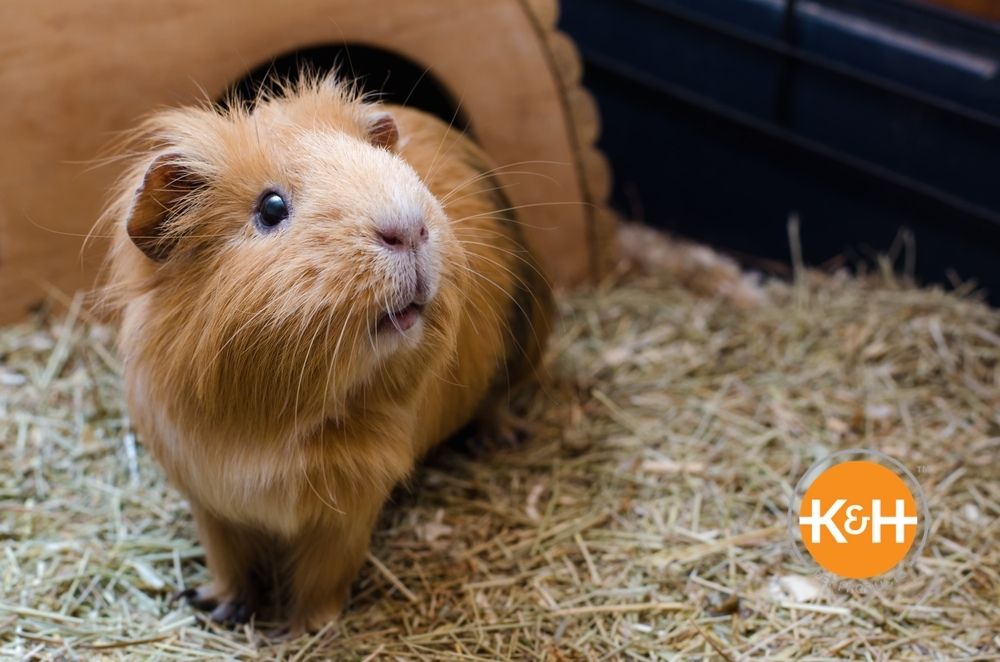
How to Keep Guinea Pigs Warm
Squeaky-squeak, r-r-r-r—squeak! There's nothing like the sound of a happy guinea pig—one that is healthy, cheerful, and warm. Small pets, including guinea pigs, have specific needs when it comes to staying warm, so you want to be sure you understand these needs so you can help your pet feel its best.


Your Guinea Pig's Preferred Climate
Like other mammals, guinea pigs are warm-blooded, which means they can generate their body heat to maintain a specific temperature. Guinea pigs have a normal average body temperature of about 103°F,1 which is quite a bit higher than a human's normal average temperature of 98.6°F.
It's important to understand the difference between your guinea pig's normal body temperature and the temperature of the ambient air at which he's most comfortable. Some rodents, like ground squirrels or Eastern chipmunks, hibernate when the weather turns cold, but guinea pigs don't. Instead, guinea pigs are most comfortable in air temperatures of about 65°F to 75°F.2 Anything below about 60°F is probably too cold for your pig. Yes, his body will work to generate heat, but if the air temperature is below 60°F, he'll lose too much of that heat to the surrounding air—unless proper precautions are taken.
How to Keep Guinea Pigs Warm
If you live in a moderate climate, it's possible to keep guinea pigs outdoors in a predator-proof habitat, similar to how some people house their rabbits. But for regions with even mild winters, it's better to take some extra cold-weather precautions.
Keep your guinea pig in your house.
Your home is most likely the right temperature to keep your pet comfortable, so if you can keep the habitat inside your house, it will go a long way toward helping her stay warm. Even if the temperature in your house is sometimes below 65°F, it still makes it easier for your pet to keep herself at the right temperature using the other methods listed below. Your home offers a consistent environment, plus it makes it more convenient to watch and interact with your guinea pig, which is a definite win-win.
Keep him protected from drafts.
Nobody likes cold drafts, and your guinea pig is no different. Try to keep your pet's habitat away from windows and exterior doors you frequently open and close (a great deal of cold air can enter the room when an outside door is opened). Even if windows are kept closed in cold weather, the air directly below them tends to be chillier than other areas, so you might try placing your pet's habitat closer to the middle of the room.
Use a heated pad.
One good way to keep your guinea pig warm is to supply him with an electric heated pad. Don't use a heating pad designed for humans, as they are unsafe for pets. Instead, try a Small Animal Heated Pad, which is designed especially for use with small animals, including guinea pigs. Place the pad in one corner of his habitat, then he can get on or off it as he wishes, which gives him control of his thermal comfort. These pads automatically adjust their built-in thermostat, so the pad only heats up when your pet uses it. Plus, it only uses 25 watts, so it's inexpensive to use. Ramp up the snuggle factor by adding the Deluxe Heated Pad Cover. The cover is made of a soft faux fleece that is cozy and easy to clean.
Provide a tunnel.
Remember, the wild ancestors of our modern domestic guinea pigs made burrows in the ground. This is an excellent way for the animals to keep warm because it gets them into the insulated ground, and it's easier for them to retain their body heat in a small space. Mimic this behavior by giving your guinea pig a soft, pet-safe tunnel to hang out in or an Igloo Hideout.
Use enough bedding.
If you supply your pet's habitat with wood shavings or other fluffy bedding, be sure to use enough to provide a nice warm bed. About two inches is a good depth.3
The winter weather outside may be frightful, but that doesn't mean your guinea pig can't be warm and cozy indoors. Your home will be filled with happy guinea pig squeaks in no time.
1. Quesenberry, Katherine E., and Donnelly, Thomas M. "Description and Physical Characteristics of Guinea Pigs," December 2019. https://www.merckvetmanual.com/all-other-pets/guinea-pigs/description-and-physical-characteristics-of-guinea-pigs
2. The Happy Guinea Pig. "How to keep guinea pigs warm in winter." https://thehappyguineapig.com/how-to-keep-guinea-pigs-warm-in-winter/
3. Small Animal Hospital College of Veterinarian Medicine. "How to care for your pet guinea pig." https://smallanimal.vethospital.ufl.edu/clinical-services/zoological-medicine/how-to-care-for-your-pet-guinea-pig/